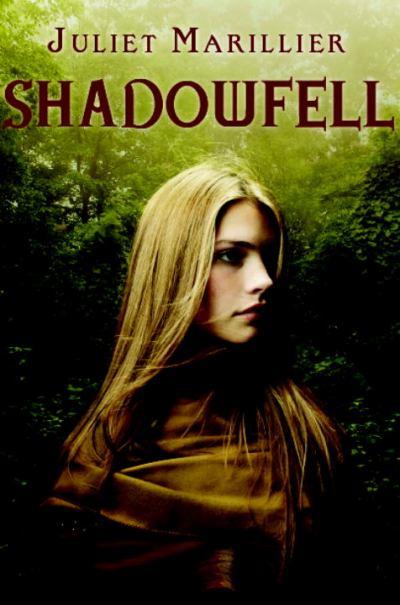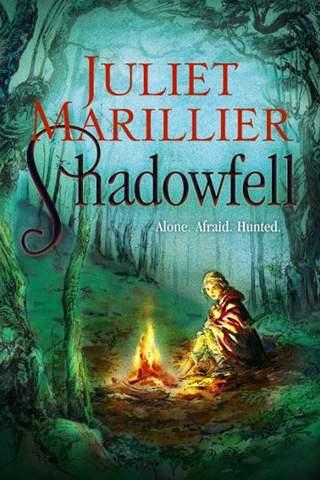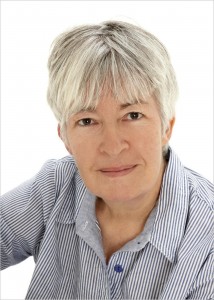As the next of my series featuring fantastic female fantasy authors (see disclaimer) I’ve invited the talented and prolific Juliet Marillier to drop by.
Watch out for the give-away question at the end of the interview.
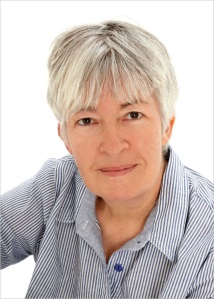
Q: You started out writing for adults, but I see your recent books, Wildwood Dancing and Cybele’s Secret are Young Adult. (Cybele’s Secret won the 2008 Sir Julius Vogel Award for Best YA Novel). What led you to veer into Young Adult books?
I was persuaded in that direction by a publisher. I already had a good cross-over audience for some of my adult novels, the Sevenwaters series in particular. I’m sure that is partly because they have youngish protagonists, though I didn’t make it so in order to attract YA readers – in the early medieval period, people led shorter lives and were mothers, craftspeople, farmers or fighters during their teenage years. Those who didn’t die in childbirth or get killed in a fight or a nasty accident might then live into their forties, fifties or even older. That makes it realistic for the protagonists to be in the 15-25 age group. My readership for those adult books starts at about age 13 and goes up to folk in their nineties, including one visually impaired friend to whom I’ve read most of my novels aloud! I currently have both a YA series (Shadowfell) and an adult series on the go.
Q: I see you were a music teacher. What was your instrument? I know some writers who make up a ‘play list’ specific to each book they write. Do you write, while listening to music?
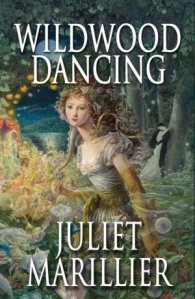 Violin, oboe, voice, in that order, with singing being my main area of performance. Generally I don’t listen to music when I write, especially not anything with lyrics, as I find that too distracting. For certain books I did listen to particular styles of music. I’m very keen on folk music these days, especially Celtic and Galician music. My favourite group is the Scottish band Runrig. When I was in the Highlands doing my research for the Bridei Chronicles I would play their music very loudly in the car as I drove along those wee one-way roads. For Wildwood Dancing, set in Transylvania, I listened to Australian gypsy band Doch.
Violin, oboe, voice, in that order, with singing being my main area of performance. Generally I don’t listen to music when I write, especially not anything with lyrics, as I find that too distracting. For certain books I did listen to particular styles of music. I’m very keen on folk music these days, especially Celtic and Galician music. My favourite group is the Scottish band Runrig. When I was in the Highlands doing my research for the Bridei Chronicles I would play their music very loudly in the car as I drove along those wee one-way roads. For Wildwood Dancing, set in Transylvania, I listened to Australian gypsy band Doch.
Q: You were born in New Zealand and grew up there, but your family are from Scotland and Ireland and you grew up hearing Celtic music and stories. Have you travelled back to Europe to research your roots?
I have travelled back there for general research, but I haven’t done specific research into my family history – I have more of a passion for the physical landscape and the stories of my ancestral culture (mostly Scots, a bit of Irish) than the urge to seek out the specific details of my own family. I do know a fair amount about the last few generations. And thanks to a comprehensive book about the Pringle family, on my mother’s side, I know I have a wrong-side-of-the-blanket connection with Bonnie Prince Charlie.
 Q: The Sevenwaters Trilogy (which seems to contain five books LOL) has a big gap of eight years between books three and four. When you came back to writing in this world was it like visiting old friends?
Q: The Sevenwaters Trilogy (which seems to contain five books LOL) has a big gap of eight years between books three and four. When you came back to writing in this world was it like visiting old friends?
Yes, and that surprised me. There was an eight year writing gap between Child of the Prophecy, final book of the original trilogy, and Heir to Sevenwaters, the first of the follow-ups. It’s not really a trilogy of five books (with a sixth to come) but a trilogy plus three later stand-alone novels with the same settings and some of the same characters. Again, this was something I was encouraged to do by a publisher, because the first three books were so well-loved. I had some misgivings because I had not intended to write any more in that series or in that style. I would never write a book solely because it was likely to be commercially successful. So I had to make the new project into something I could feel passionately about. That turned out not to be difficult, as I realised there was a heap more I could do with the Sevenwaters characters.
Q: I’m a big fan of the Pre-Raphaelites. I notice that some of your covers feature artwork which has a strong pre-Raphaelite look. (Heart’s Blood and the Australian editions of the Sevenwaters books.) Did you have any say in the covers?
 For the Australian editions, yes. I asked if Pan Macmillan would commission a cover for Heir to Sevenwaters from Australian painter Kim Nelson, whose work I really love. At the same time as producing that cover art, Kim designed the covers for the new editions of the Sevenwaters trilogy, using paintings by Pre-Raphaelite artist J W Waterhouse. A painting by Waterhouse was also used for Heart’s Blood. I was consulted extensively right through the design process, which was wonderful. It’s not so with many of the overseas publishers. Often something extremely weird and inappropriate will go on the cover and I won’t get to see it until it’s finalised. But I have been very lucky, with wonderful artists like Kinuko Y Craft, Jon Sullivan and John Jude Palencar commissioned to do covers for US and UK editions.
For the Australian editions, yes. I asked if Pan Macmillan would commission a cover for Heir to Sevenwaters from Australian painter Kim Nelson, whose work I really love. At the same time as producing that cover art, Kim designed the covers for the new editions of the Sevenwaters trilogy, using paintings by Pre-Raphaelite artist J W Waterhouse. A painting by Waterhouse was also used for Heart’s Blood. I was consulted extensively right through the design process, which was wonderful. It’s not so with many of the overseas publishers. Often something extremely weird and inappropriate will go on the cover and I won’t get to see it until it’s finalised. But I have been very lucky, with wonderful artists like Kinuko Y Craft, Jon Sullivan and John Jude Palencar commissioned to do covers for US and UK editions.
Q: The Saga of the Light Isles is about a Viking farm boy, Eyvind who dreams of becoming one of the Jarl’s elite warriors. Were you always interested in Norse mythology?
 I’ve always been interested in all kinds of mythology, legends, fairy tales and folklore. It comes of being brought up on Andrew Lang’s Fairy Books and by parents who loved storytelling. My particular interest in Norse history and mythology came about when I read a book on Viking warfare and started thinking about what kind of men berserk warriors would have to be – on one hand, crazy killing machines dedicated to a god of war; on the other hand, dutiful sons who went home to help Mum on the farm in between raiding voyages. The Icelandic sagas actually describe this dichotomy. That fascinated me, hence Wolfskin, my book about the making (and unmaking) of a berserker.
I’ve always been interested in all kinds of mythology, legends, fairy tales and folklore. It comes of being brought up on Andrew Lang’s Fairy Books and by parents who loved storytelling. My particular interest in Norse history and mythology came about when I read a book on Viking warfare and started thinking about what kind of men berserk warriors would have to be – on one hand, crazy killing machines dedicated to a god of war; on the other hand, dutiful sons who went home to help Mum on the farm in between raiding voyages. The Icelandic sagas actually describe this dichotomy. That fascinated me, hence Wolfskin, my book about the making (and unmaking) of a berserker.
Q: The Bridei Chronicles is based loosely on real history. We were on a panel together at World Con in Melbourne 2010, where you said (I’m paraphrasing) that when not a lot is known about a time, the writer is able to extrapolate and invent. Do you find your general knowledge has helped you fill in the gaps about what is known of the Picts?
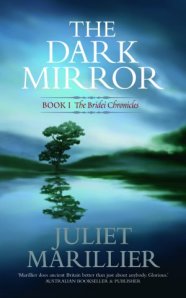 Definitely. It’s certainly not a case of, if you don’t know it, make it up! The writer needs to research pretty thoroughly and be familiar with what is known, even if that isn’t much. And when you do venture into informed guesswork, what you create should at least be possible within what is known of that culture. It helps to look at other, similar cultures of the time that may have more contemporary documents.
Definitely. It’s certainly not a case of, if you don’t know it, make it up! The writer needs to research pretty thoroughly and be familiar with what is known, even if that isn’t much. And when you do venture into informed guesswork, what you create should at least be possible within what is known of that culture. It helps to look at other, similar cultures of the time that may have more contemporary documents.
I used my general education all the time – for instance, I invented place names for many locations in the Highlands whose current names couldn’t be used because they belong to a later (Scots) period and language. To do so, I had to put together names derived from the bits and pieces of other languages that were thought to belong to the same family as the lost Pictish language of Bridei’s time. I’m sure most people who read the novels didn’t give a hoot if the names were historically probable or not, but it mattered to me! I have in the past made historical errors in my books, before I realised such things were important in fantasy, and these days I try to get things right. Being a nit-picker of this kind does sometimes spoil my enjoyment of other people’s fantasy – I can’t bear it when writers mix up ‘real world’ cultures holus bolus to create their secondary world. But I love it when writers get it right. Jacqueline Carey is a great example, with her intricately detailed alternative Renaissance Europe.
 Q: I was prompted to start this series of interviews because there seems to be a perception in the US and the UK that fantasy is a bit of a boy’s club. Do you think there’s a difference in the way males and females write fantasy?
Q: I was prompted to start this series of interviews because there seems to be a perception in the US and the UK that fantasy is a bit of a boy’s club. Do you think there’s a difference in the way males and females write fantasy?
I think that would be too much of a generalisation. I do see a trend in the UK towards a style of fantasy that reflects a somewhat pessimistic or jaded world view and is often extremely violent and gruesome. The names that spring to mind are all male: Jesse Bullington, Joe Abercrombie, and literary writer Glen Duncan’s recent venture into fantasy, The Last Werewolf. I found Bullington’s first novel too sickening to read, but Joe Abercombie is one of my favourite writers, and the Glen Duncan novel is a striking piece of storytelling, though the subject matter is often challenging. But I don’t think this is the answer to the question. Really, fantasy writing is about individual writers, not men vs women or Americans vs Brits or redheads vs blondes. All sorts of factors influence the way a person writes; gender is only one of them. Perhaps the recent tendency to undervalue women fantasy writers is based on the massive rise in the number of paranormal romances we see in the bookshops, most of them by women – some people may be assuming that’s what we all write!
Q: Following on from that, does the gender of the writer change your expectations when you pick up their book?
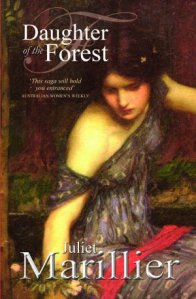 Difficult to answer, as the interview is based on fantasy writing, and I’m not a great fantasy reader. Within that genre I tend to stick to a few favourite writers, both male and female, and my expectations are based on their previous work. With an unknown fantasy author, I don’t think gender would change my expectations much, because there’s such a huge variety of approach within the genre. I would be influenced by the cover, the blurb, and the first few pages – perhaps also by the author bio and who published the book. The qualities I want in any novel, regardless of genre, are skilled craftsmanship and great storytelling. And originality.
Difficult to answer, as the interview is based on fantasy writing, and I’m not a great fantasy reader. Within that genre I tend to stick to a few favourite writers, both male and female, and my expectations are based on their previous work. With an unknown fantasy author, I don’t think gender would change my expectations much, because there’s such a huge variety of approach within the genre. I would be influenced by the cover, the blurb, and the first few pages – perhaps also by the author bio and who published the book. The qualities I want in any novel, regardless of genre, are skilled craftsmanship and great storytelling. And originality.
Q: And here’s the fun question. If you could book a trip on a time machine, where and when would you go, and why?
I’ll go to sixth century Britain, eastern end of the Great Glen (where Inverness is now) so I can find out the answers to all those questions about the Picts and perhaps drop in at King Bridei’s court. Can I take my thermal underwear?
Give-away Question: (win a signed copy of a JM novel of your choice)
Juliet says:
I’ve confessed that I don’t read a lot of fantasy. Recommend a fantasy novel for my reading list, and tell us why you chose it.
Catch up with Juliet on GoodReads
Catch up with Juliet on Facebook.
The Juliet Marillier Cafe.
Catch up with Juliet on Writer Unboxed.
